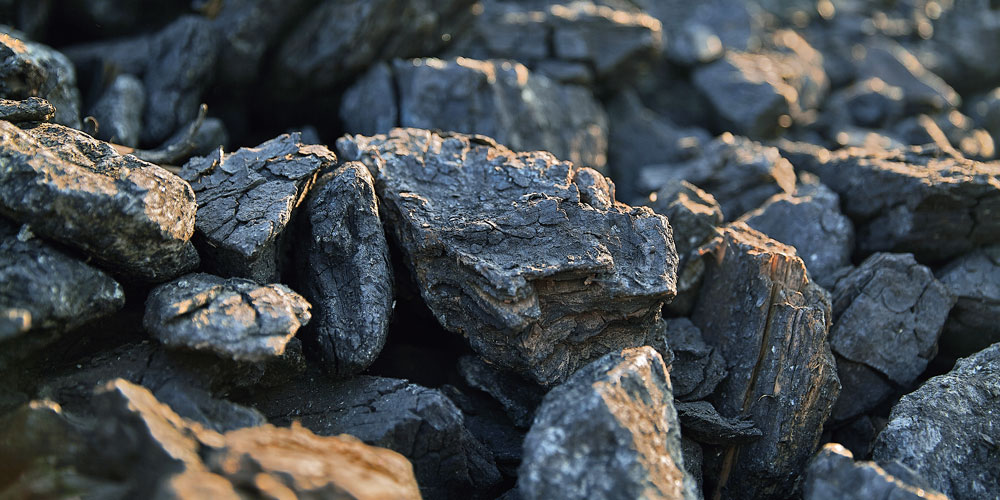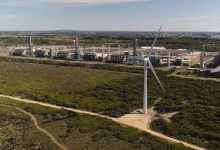Is coal on the way out?
Over the past few decades the production and consumption of coal in the EU has been in steady decline, due to the closure of coal mines and the phasing out of coal use for power generation.
Europe has embarked on an energy transition, and in response the EU is creating an Energy Union based on renewables, innovation and digitalisation.
Regions across Europe face the challenges and opportunities of this transition.
A new JRC study, titled ‘EU coal regions: opportunities and challenges’, investigates the impact of this transition on the regions most affected by the decline of coal.
It finds that while 160,000 directly-related jobs could potentially be lost as a result of this transition, with careful planning, regional economies can adapt and create new opportunities for those formerly working in the coal sector.
Coal-related activities are now under pressure from the progressive decarbonisation of the power sector.
The EU, as a signatory to the landmark Paris climate agreement and a world leader in renewables, is committed to a 40% cut in greenhouse gas emissions (compared to 1990 levels) by 2030.
Many mines which currently benefit from State Aid are closing due to their poor competitive position, resulting in the loss of 27,000 jobs between 2015 and 2020.
From 2020 onwards, mine closures will be aligned with the decommissioning rates and operating horizons of EU coal power plants, two thirds of which are expected to retire by 2030.
The JRC report concludes that this could result in the loss of about 77,000 direct jobs by 2025 and 160,000 by 2030.
How important is coal for us?
Coal still provides 15% of EU power generation. Two thirds of the coal power plants currently operating in Europe are expected to close between 2020 and 2030.
Coal power plants in the EU employ around 53,000 people and coal mines 185,000 workers, totalling around 238,000 jobs.
Indirect activities throughout the coal value chain, including power generation, equipment supply, services, R&D and other dependent activities provide around an additional 215,000 jobs.
What will happen to the people and businesses depending on coal?
An ill-prepared phase out of coal could send shockwaves through the most affected regions, causing businesses to close and more people losing their jobs.
Therefore, the future of these regions must be planned carefully, based on their potential and according to the needs of citizens, with the full commitment of national and local authorities.
Clean energy is part of the solution, as it already supports 2 million jobs across the EU.
The European Commission, through the Coal Regions in Transition Initiative, assists the planning and execution of such energy transitions.
Phasing out coal is going to present more of a challenge for some regions than for others.
The most affected are located in Bulgaria, the Czechia, Germany, Greece, Hungary, Poland, Romania, Slovakia, Slovenia and Spain, where some coal regions already experience high levels of unemployment.
One region in Poland, in particular, may lose up to 41,000 jobs by 2030, and a further three (in Bulgaria, the Czechia and Romania) are likely to each lose an estimated 10,000 jobs.
Protecting the livelihoods of people formerly working in the coal sector depends on investing in public infrastructure, replacing coal with alternative energy sources, retraining workers, attracting innovation and investment, and diversifying the local economy.
Following the closure of a mine, converting the site to a renewable energy generation facility can provide new job opportunities and economic value, as well as contributing to a more secure energy supply.
Such projects can benefit from the pre-existent infrastructure and land availability.
The report finds several regions that would be well suited to generating renewable energy.
For example, coal regions in Hungary, the Czechia and Poland have high wind availability.
Several coal regions in Spain, Greece and Bulgaria are particularly well placed for solar power generation.
Examples of mine site redevelopment for solar and wind energy generation are already abundant.
One example is the solar power plant in Visonta in Hungary, which is situated on top of a lignite mine dump site and generates 16 megawatts of solar power.
There are several projects in Germany, including the 5 wind parks in Klettwitz, Germany that are built on a former open cast mine and together generate 145.5 megawatts of wind energy.
Further geothermal heating systems, utilising water from a former coal mine, have been developed in the Netherlands.
Such installations, and associated skills, have also been identified as particularly suitable for employing former coal workers following some specific training.
What is the EU doing to help?
The Coal Regions in Transition Initiative is designed to help regions reap the benefits of the clean energy transition by bringing more focus to social fairness, better jobs, new skills, structural transformation, and financing for the real economy.
It helps developing projects and long-term strategies for coal regions which kick-start the transition and respond to environmental and social challenges.
It brings together EU, national, regional and local stakeholders involved in the transition to create partnerships and learn from each other’s experiences.
Working together, stakeholders and experts in these regions should identify the most promising transition strategy that offers the best economic, social and environmental results.
Once the local and national authorities make their decision, a plethora of EU funds and tools are available to support the transition, for example:
- European Structural and Investment Funds can support projects aimed at infrastructure development, low carbon economy transition and environment protection and resource efficiency;
- The EU’s LIFE Fund can support projects implementing EU environmental legislation (e.g. improving air quality or the remediation or ecological restoration of old mining sites and degraded land);
- The Modernisation Fund of the EU Emission Trading System provides support for cleaning the energy system and reskilling;
- The Operational Programme Human Resources implements EU funding programs in Slovakia for job creation and strengthening social cohesion;
- The European Investment Bank (EIB) and the European Institute of Innovation and Technology (EIT) and the European Investment Bank support the development of new, clean energy technologies. EIT InnoEnergy, for example, works with business, research and education organisations on innovation projects, business creation and acceleration and on unique education courses combining engineering with entrepreneurialism. The EIT Community is open to sustainable energy innovators and entrepreneurs with dedicated support in clean coal technologies;
- The EU’s Cohesion policy helps regions achieve economic transformation by building on their ‘smart specialisation’ assets, i.e. their competitive strengths, with the aim to embrace innovation and decarbonisation. Via Cohesion policy, the EU is in direct and constant touch with regional partners on the ground and can provide tailored support to guide structural change.







